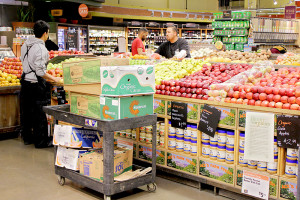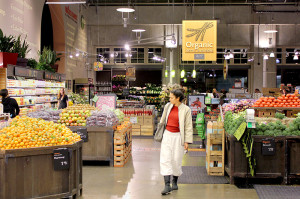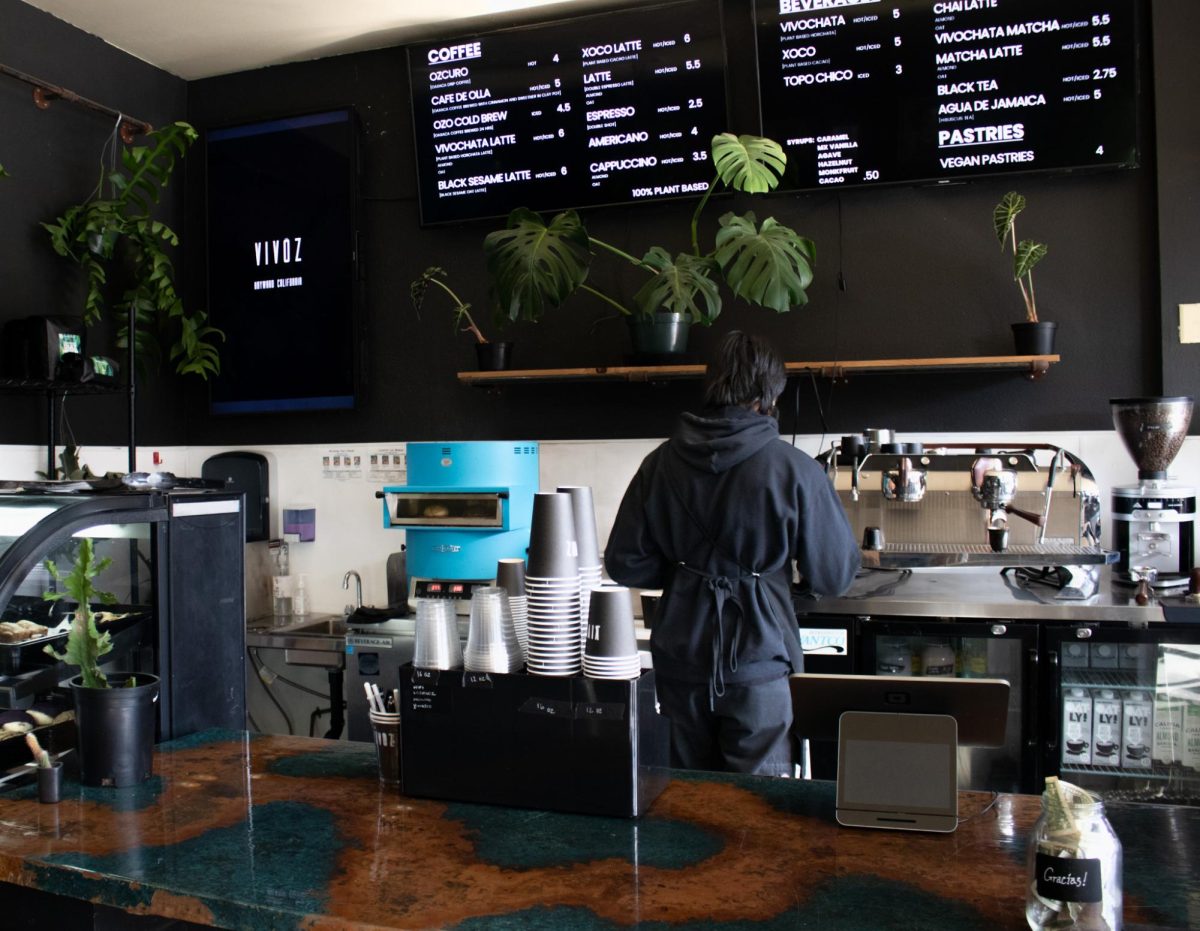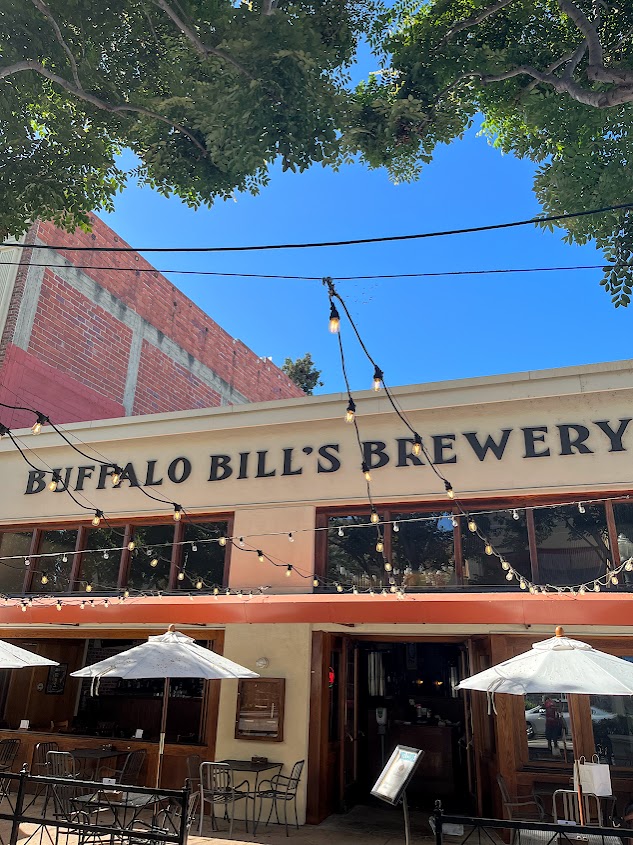
restaurants around the Bay Area.
Several restaurants across the San Francisco Bay Area are moving toward becoming organic and are part of an ever expanding health and environmentally conscious group, according to local chefs.
They are driven by a common desire to offer patrons organic food–fruits and vegetables free of chemical pesticides, meat and dairy that are hormone-free, and fish caught in the wild rather than farmed.
This trend is on the upswing, and a quick check on UrbanSpoon, an international dining application for restaurant goers, which offers up 96 restaurants with organic food on their regular menu in the Bay Area.
Chefs and restaurant owners say many find organic farming expensive, especially when they have to compete with major wholesale growers who use chemical pesticides to solve agricultural problems.
“You have to want to eat and live better,” said Travis McConnell, a professional chef at Revival Kitchen and Bar, an organic restaurant in downtown Berkeley. “We spend a lot of money on cable and cell phones, but by comparison almost nothing on food,” he added.
McConnell is taking his Bay Area culinary skills to Arizona, where he says plans to open a restaurant because the organic trend is starting to grab hold there.
Culinary institutes are also joining the movement, reviving the legacy of Alice Waters, a food activist who co-founded Chez Panisse, in Berkeley in 1971, promising to serve food that was only locally grown, organic, and seasonal.
“We have a class called Contemporary Cuisine that focuses on organic, local, and sustainable foods. It is also the underlying philosophy discussed in many classes,” said Michael Weller, executive chef and teacher at California Culinary Academy.
Weller explained that the concept of restaurants being local organic is not a fashion statement; “It is here to stay, including a better informed public and a growing distribution system that makes logical sense.” This ideal combines the best ingredients with lower prices and are major motivators for chefs.
Weller believes the government should end subsidizing for industrial farming, and let the market sort its prices. He is not the only local chef to share this opinion.

Bay Area Residents.
“I wanted to be part of the vegetable revolution,” said Amy Murray, who has been involved in the organic movement for over ten years. She is the executive chef and owner of Venus, a restaurant in downtown Berkeley.
Murray has established the previously mentioned Revival Kitchen and Bar.
Venus, as well as Revival, has a 4.1, out of a 5-star rating on OpenTable, an international, online restaurant reservation network headquartered in San Francisco, which posts patron reviews. This lands in the “extraordinary” category, a coveted feat for restaurateurs.
Murray brings in whole goats and pigs, supplied by seven nearby ranchers and farmers and makes her own cold cuts, cheeses and conserves.
“I wanted to utilize everything and not have any waste; and also to go back to a more traditional way of preparing food,” she explained. “A long time ago when people crossed the country in wagons there was nothing and people had to make everything from scratch, so Revival is preparing everything in-house.”
The movement stretches down to the southern Bay Area. Companies in the Silicon Valley, who are embracing “Go Green” industrial values such as the reduction of industrial-type pollution, are also promoting organic cuisine.
Twitter, Google and Yahoo, three of the largest companies, offer their employees free food catered into their cafeterias by chefs who work for Palo Alto based, Bon Appetit Food Management Company.
According to their website, they operate in 31 states, with over 500 cafes which use fresh seasonal ingredients for on-site restaurant-style cooking.
“You can have fresh vegetables or American-style barbecued steaks and all the trimmings, or you can have French, Mexican, Italian, Chinese, Korean cuisines—each one of these is fresh,” said Sean Hathaway, who recently joined the catering service. “Employees who eat that way at work, look for, and expect to find, the same ingredients at the supermarket too—so it is a chain reaction.”
Bon Appetit, a similar full food-service management company, contracts with other corporations and specialty venues, according to an article from the Huffington Post. They play a major role in advocating for sustainable foods.
In 2012, the article stated, the food service company announced their “newest animal welfare policy,” which are “standards for [Bon Appetit] suppliers raising farm animals.”
The policy asks their producers to eliminate the practice of “pork that comes from operations confining their sows inside gestation crates by 2015,” said the article, which also mentioned the policy was demanded by customers.
Other critics of the organic movement, like McConnell, claim affordability remains a hurdle, and they argue that the U.S. government subsidies to farmers put small organic farms at a disadvantage.
McConnell said that the problem in the U.S is that local and organic is a niche market until a change of legislation allows smaller farms to compete for government subsidies.
“Right now all the subsidies go to soybeans and corn, to huge farms that are being run by one farmer,” said McConnell. “People’s mentalities need to change; The “cheap” cost of someone going to the local supermarkets [like] Kroger or Safeway for meats and produce are accounting for all the low wages to the migrant workers, and for using chemicals.”
According to a 2011 report by the Washington Post, the U.S. government pays $5-billion-a-year handout to grain and cotton farmers as a subsidy to stabilize prices.
The net farm income of $94.7 billion in the same year represented a 20 percent increase over the previous year, according to the report.
The continuing popularity of the organic crop movement is leading to changes in the cattle industry, where availability makes the cost higher.
For example a pound of organic, grass-fed beef costs about $7 to $12 per pound, as compared to non-organic, wholesale beef which costs about $3.50 for the same amount, according to a price spot check of local butchers and wholesale meat sellers, such as Safeway.
Organic farmers and ranchers continue to take proactive steps in the grassroots revitalization of food consumption, no matter the cost involved.
An organic ranch owner, Kevin Fallon, said that his products are even more nutritious than other organic products on the market. His cattle are fed grass feed, which is a step further in the grass-roots revitalization of food consumption.
Grass-fed cattle eat only grass throughout their lives, while grain-fed cattle eat a mixture of organically grown grains and other nutrients.
Fallon Hills Ranch is a supplier to over ten restaurants in San Francisco. Fallon said they have plans to expand their cattle marketing, further proof that the organic movement continues to grow even if it may be more expensive for now.























